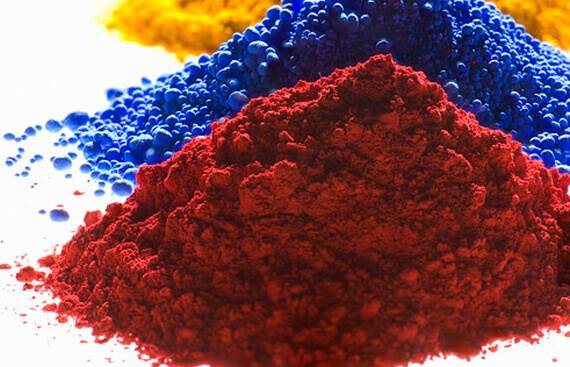Azo dyes are a class of synthetic colorants, which are used in various industries such as textile, food, and pharmaceuticals. Sodium nitrate plays a vital role in the synthesis of azo dyes. It acts as an oxidizing agent, enhancing color intensity, and improving dye stability. Recently, the demand for azo dyes has increased. Manufacturers employ sodium nitrate (NaNO3) as an essential compound in the formulation of azo dyes. In this article, we have reviewed the application of sodium nitrate in azo dyes.
What is azo dye?

Azo dyes are a class of synthetic dyes mostly used in various industries such as textiles, printing, and cosmetics. Azo dyes are characterized by the presence of one or more azo (-N=N-) functional groups (-N=N-), which connect two aromatic or heteroaromatic rings. Depending on the specific chemical structure, the resulting products exhibit a wide range of colors like red, orange, yellow, and brown.
Applications of azo dyes
azo dyes have different applications in various industries. In the following, some uses of this product are given:
Textile industry
Azo dyes are used in the textile industry for dyeing and synthetic fibers. They provide excellent color, so they are popular among consumers.
Cosmetics
Azo dyes are used in cosmetics and personal care products such as hair dyes, nail polishes, and lipsticks.
Printing inks
Azo dyes are used in the printing inks used in various processes, such as screen printing. They enable the production of durable prints on different substrates.
Pharmaceuticals
Azo dyes have applications in the pharmaceutical industry as colorants for tablets and capsules. These dyes help in product identification and dosage differentiation.
Application of Sodium nitrate in Azo dyes
Azo dyes are a type of synthetic colorants mostly used in different industries such as textiles, printing inks, food, and pharmaceuticals. These dyes are characterized by the presence of azo (-N=N-) groups. Manufacturers use sodium nitrate (NaNO3) as an essential compound in order to enhance the color intensity and stability of azo dyes.
Sodium nitrate as an oxidizing agent
Sodium nitrate is a strong oxidizer. In the synthesis of azo dyes, sodium nitrate acts as an effective oxidizing agent. Azo dyes are produced by the diazotization of aromatic amines followed by their coupling with an appropriate coupling component. Sodium nitrate participates in the diazotization process and converts the primary aromatic amine into a diazonium salt.
Enhancing color intensity
Using sodium nitrate in the diazotization process, enhances the colour intensity of azo dyes. Nitrate ions (NO3-) aid in the stabilization of the diazonium salt, preventing its decomposition. Plus, the nitro group (-NO2) in sodium nitrate, with its electron-withdrawing nature, enhances colour by promoting increased conjugation and resonance effects within the dye molecule.
Influence of Sodium nitrate on dye stability
Sodium nitrate plays a vital role in improving the stability of azo dyes. The susceptibility of azo dyes to degradation from environmental factors such as light, heat, and chemicals can be mitigated by incorporating sodium nitrate during their synthesis. The presence of sodium nitrate inhibits the decomposition of the diazonium salt, thereby preventing colour fading and providing enhanced stability. Especially, when azo dyes are used in harsh conditions, such as in textile dyeing and printing processes, it is very important.
Regulation of pH
Another role of sodium nitrate in azo dye applications is its ability to regulate the pH of the reaction medium. Maintaining the optimal pH is very important for the synthesis of azo dyes during the diazotization and coupling steps. Sodium nitrate acts as a buffering agent and helps to maintain the desired pH level during the process. This pH control facilitates the production of azo dyes with higher quality.
Advantages of sodium nitrate in dyeing processes
Sodium nitrate (NaNO3) is a suitable compound for dyeing processes. Some advantages of using Sodium nitrate are:
- Increased dye solubility: Sodium nitrate enhances the solubility of many dyes. It increases the ionic strength of the dye bath. This increase in ionic strength reduces the solubility of the dye molecules, allowing for better dye dispersion and penetration into the substrate.
- Enhanced color development: The presence of sodium nitrate in the dyeing process leads to better color development. Sodium nitrate acts as a catalyst and an oxidizing agent, facilitating the formation of intense colors.
- Improved dyeing efficiency: Sodium nitrate is a vital component in enhancing the efficiency of the dyeing process. It increases the rate of dye diffusion and fixation onto the substrate, resulting in shorter dyeing times.
- pH control and buffering: Sodium nitrate acts as a buffer in dyeing processes, helping to maintain the desired pH level. It prevents any drastic changes that could adversely affect the dyeing process.
- Compatibility with Various Dye Classes: Sodium nitrate is compatible with a wide range of dye classes, including acid dyes, reactive dyes, and direct dyes. So, it is a suitable additive for different dyeing processes and applications.
FAQ
What is azo dye?
Azo dyes are synthetic dyes, characterized by the presence of one or more azo (-N=N-) functional groups (-N=N-). They are used in a variety of goods such as foods, cosmetics, clothes, leather and textiles.
What is the application of sodium nitrate in Azo dyes?
sodium nitrate (NaNO3) is used as an essential compound in order to enhance the color intensity and stability of azo dyes.
